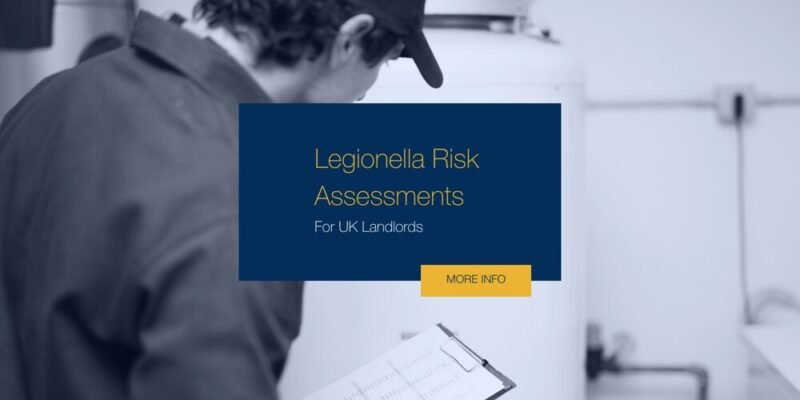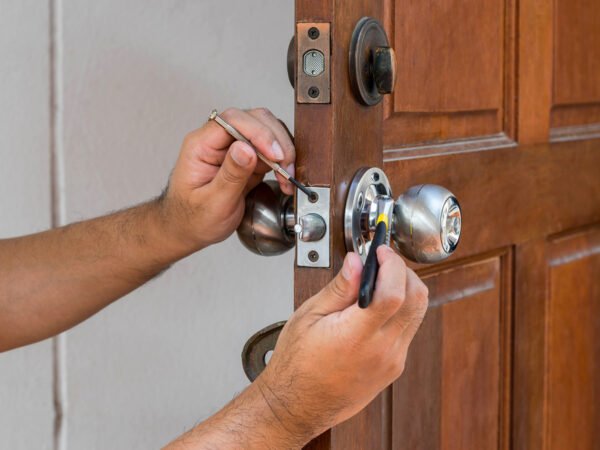Legionella Risk Assessment: A Vital Step in UK Property Management
As a property owner or manager in the UK, you’re likely familiar with a long list of responsibilities. Among these, there’s one that often flies under the radar until it’s too late: legionella risk assessment. While it might not be the first thing that springs to mind when you think about property maintenance, it’s a crucial aspect of ensuring the health and safety of your tenants or employees.
What Is Legionella?
Legionella is a type of bacteria that can cause a severe form of pneumonia called Legionnaires’ disease. These bacteria thrive in water systems, particularly in stagnant water at temperatures between 20°C and 45°C.
In the UK, where our climate and building designs can inadvertently create ideal conditions for legionella growth, regular risk assessments are not just good practice – they’re a legal requirement.
The Legal Landscape
Under the Health and Safety at Work Act 1974 and the Control of Substances Hazardous to Health Regulations 2002, UK property owners and managers have a duty to assess and manage the risks of exposure to legionella. This applies to a wide range of properties, from office buildings and hotels to rental homes and care facilities.
The Health and Safety Executive (HSE) provides clear guidelines on this matter. They state that while the risk of legionella in most residential settings is generally low, landlords of rental properties have a legal duty to ensure their properties are free from health hazards, including legionella.
When Is a Legionella Risk Assessment Necessary?
In short, if your property has a water system, you need a legionella risk assessment. This includes:
- Residential rental properties
- Office buildings
- Hotels and guest houses
- Care homes
- Schools and universities
- Hospitals and healthcare facilities
- Leisure facilities with pools or spas
The frequency of assessments can vary depending on the property type and previous risk levels. However, it’s generally recommended to conduct a risk assessment at least every two years, or sooner if there are changes to the water system or building use.
The Risk Assessment Process
A legionella risk assessment isn’t just a tick-box exercise. It’s a comprehensive evaluation of your property’s water systems. Here’s what you can expect:
- System Inspection: A qualified assessor will examine all aspects of your water system, including storage tanks, pipework, and outlets.
- Temperature Checks: Water temperatures are crucial. Cold water should be below 20°C, while hot water should be stored at 60°C and distributed at 50°C.
- Identifying Risk Areas: The assessor will look for areas where water might stagnate or where scale and corrosion could occur.
- Water Sampling: In some cases, water samples may be taken for laboratory analysis.
- Documentation Review: Existing maintenance records and previous risk assessments will be examined.
- Risk Evaluation: Based on the findings, the assessor will evaluate the overall risk level.
- Recommendations: The assessment will conclude with a list of recommended actions to mitigate any identified risks.
Companies like Focus360 Energy have developed expertise in conducting thorough legionella risk assessments across various property types. Their assessors are trained to spot potential issues that an untrained eye might miss, providing property owners with comprehensive insights into their water systems’ safety.
Common Risk Factors
While every property is unique, there are some common factors that can increase the risk of legionella growth:
- Water Temperature: Temperatures between 20°C and 45°C are ideal for legionella growth.
- Stagnant Water: Unused outlets or infrequently used areas of pipework can allow water to stagnate.
- Scale and Sediment: These can provide nutrients for bacteria and protect them from water treatments.
- Poor Design: Complicated or oversized water systems can create areas of low flow or stagnation.
- Inadequate Maintenance: Poorly maintained systems are more likely to develop conditions conducive to bacterial growth.
Mitigating the Risks
Once a risk assessment has been conducted, it’s crucial to act on the findings. This might involve:
- Regular Flushing: Infrequently used outlets should be flushed weekly.
- Temperature Control: Ensuring hot water is stored and distributed at the correct temperatures.
- Cleaning and Disinfection: Regular cleaning of shower heads, taps, and water tanks.
- System Modifications: In some cases, changes to the water system design may be necessary.
- Water Treatment: Use of biocides or other water treatment methods in larger systems.
- Ongoing Monitoring: Regular checks and record-keeping to ensure control measures remain effective.
Focus360 Energy and similar providers often offer guidance on implementing these measures, helping property owners translate the risk assessment findings into practical actions.
The Cost of Neglect
While conducting regular legionella risk assessments might seem like an unnecessary expense, the cost of neglect can be far higher. Outbreaks of Legionnaires’ disease can lead to:
- 1. Serious Illness or Death: Legionnaires’ disease can be fatal, particularly for vulnerable individuals.
- Legal Consequences: Failure to meet your legal obligations can result in prosecution.
- Financial Penalties: Fines for non-compliance can be substantial.
- Reputational Damage: An outbreak linked to your property could severely impact your business or rental prospects.
- Property Closure: In severe cases, properties may need to be closed for extensive remedial work.
The Human Impact
Behind the legal requirements and technical details, it’s important to remember the human impact of legionella risks. In 2012, an outbreak in Edinburgh affected 92 people and led to four deaths. More recently, in 2018, a man died from Legionnaires’ disease contracted at a care home in Reading. These cases serve as stark reminders of the importance of proper legionella management.
Choosing a Legionella Risk Assessment Provider
When selecting a company to conduct your legionella risk assessment, consider the following:
- Qualifications: Ensure the assessors are properly trained and qualified.
- Experience: Look for companies with a track record in your property type.
- Comprehensive Service: Some providers, like Focus360 Energy, offer both assessment and guidance on remedial actions.
- 4. Clear Reporting: The legionella risk assessment report should be clear, detailed, and actionable.
- Follow-up Support: Choose a provider that offers ongoing support and advice.
Beyond the Assessment
A legionella risk assessment is not a one-and-done task. It’s part of an ongoing process of water safety management. This includes:
- Regular Reviews: Reassess risks if there are changes to your water system or building use.
- Staff Training: Ensure relevant staff understand the risks and control measures.
- Record Keeping: Maintain detailed records of all assessments, checks, and remedial actions.
- Communication: Keep tenants or building users informed about water safety measures.
The Future of Legionella Management
As our understanding of legionella risks evolves, so too do the methods for managing them. We’re seeing increasing use of technology in water safety management, from remote monitoring systems to AI-powered risk prediction models. Companies at the forefront of this field, including Focus360 Energy, are continually updating their methods to provide the most effective risk management strategies.
A Shared Responsibility
While the legal duty for legionella risk management falls on property owners and managers, creating safe environments is a shared responsibility. Tenants and building users also play a role by following guidelines, reporting issues promptly, and understanding the importance of water safety measures.
Legionella Risk Assessment: An Investment in Safety
In the grand scheme of property management, a legionella risk assessment might seem like a small detail. However, it’s an essential investment in the safety of your property and its occupants. By working with experienced providers like Focus360 Energy and staying proactive in your approach to water safety, you’re not just ticking a box – you’re creating healthier, safer spaces for everyone who uses your property.
Remember, when it comes to legionella, prevention is always better than cure. Regular risk assessments, coupled with diligent management practices, are your best defence against this hidden threat. In doing so, you’re not just meeting your legal obligations – you’re demonstrating a commitment to the wellbeing of your tenants, employees, or customers. And in today’s world, that’s a valuable asset indeed.













